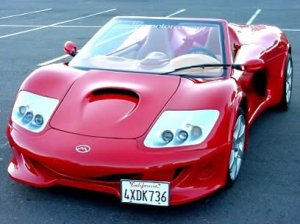There's was a comment yesterday left by someone by the
name of Paul. I responded to the comment via email but it
bounced back. I will quote the email (and the error message
for Paul's sake below). I will also respond to another
comment on Lotus Notes. The original comments are in italics
and my responses are in bold.
Date: Thu, 9 Feb 2006
Subject: Re: [Misc. Ramblings] New Comment Posted to
'Taking Note'
From: Dan Seto
To: paul at rphconsulting dot com
Dan, I'm with you on pocket calendars vs PDAs. I
did think of a good use for a PDA however, if I could ever get all of my
music and book titles on one and then carry and use it I could save a lot
of duplicate purchases.
This is true. But in any case, PDAs seem to be
going down the tubes and maybe smart phones will take
their place (when prices drop!)?
Re Lotus anything, they ticked me off clear back
in 5.25 floppy days - probably with copy protection - and I haven't
given them a thought since that luxury being one of the handful of real
advantages of being a sole proprietor.
I hear you on that (although, back in the day, I
did like Lotus 1-2-3 better than Excel). Perhaps someday
we will wake up and switch to something else...
<paul at phconsulting dot com>: host
mail dot rphconsulting dot com[66.211.137.31] said: 511 sorry, no
mailbox here by that name (#5.1.1 - chkuser) (in reply to
RCPT TO command)
Date: 10 Feb 2006
Subject: [Misc. Ramblings] New Comment Posted to 'Taking
Note'
To: Dan Seto
From: myfirstname at jaffacake dot net
Dan,
Only one word springs to mind...clueless.
Mr. Rose: I am glad Lotus Notes/Domino works for
you. Unfortunately, if the article I linked to is
correct, it doesn't work for the great majority of
people.
As to what I know, or don't know (i.e.,
"clueless"), I would appreciate your giving me the
benefit of the doubt. I know how our system works better
than you could possibly ever know because you aren't
here.
You really have no idea of how Lotus Notes (note the
'S'), it's Domino Server and it's licensing works.
A few points to highlight my view:
1 - Email was never designed to carry emails, it was
an after thought. We have this thing called FTP (File
Transfer Protocol) on the internet that was designed for
that. It's what people usually use when they download
files.
"Email was never designed to carry email..." I'm
sorry, but this doesn't make any sense. Email was never
designed to carry email? If so, what was email designed
to carry?
2 - Domino server reliability is one of THE best in
the industry. My servers never fall over, period. If you
do have stability issues, your admin team should
seriously take advice from an expert; they clearly are
out of their depth. It is easy to administer but you
still need to know what you're doing! I recently took a
server off-line for routine maintenance and it's uptime
was 24/7 since my last scheduled maintenance...over
6months prior.
Perhaps your system is well run, I can't comment
on what others get. All I can say is our server is down
at least once a week. In fact, there is scheduled
"maintenance" this afternoon that will take the system
down for several hours. Whether it is scheduled or not,
our server is not available 24/7. It is great that you
can perform maintenance on your server without taking it
down and therefore provide 24/7 service.
3 - Not enabling (or in fact disabling, it's on by
default) - webmail functionality is unusual but it can
put constraints on system resources as people switch to
the 'thin-client' model.
I can't say what the impact is on the server but
switching to webmail, via a browser, sure makes my PC run
better because my browser doesn't use as much RAM nor CPU
time as the Notes client does.
4 - Notes/Domino has a per-user license model.
Switching to a web browser client does not remove the
need for a client access license.
In reviewing the licenses at the IBM/Lotus site
it is unclear as to what your point is. My browser
doesn't cost anything. The Lotus Notes client does. What
part of that is not clear?
5 - The Notes client will already run in Linux under
WINE and a supported Linux native (no WINE) version is on
the way very soon. I doubt this will encourage your
company to switch desktop OS. The Domino server has run
and been supported on Linux for quite some time.
I will assume here that you are not a regular
reader of mine. I think this because you apparently don't
know that I've been using Lotus Notes, via CrossOver
Office, since I made the switch to Xandros Deluxe 3.01
Linux last year. I will also assume you do not run Notes
in Linux because you would know just how badly this works
if you did.
As to switching OS, I think you are confused. I
don't know nor care what OS Domino runs on. I was
referring to the desktop where I use Xandros Deluxe 3.01.
If we could use our browsers to access Domino, this would
remove one of the two large roadblocks to changing OS:
email and Netware access (if you search my site, you will
find instructions on accessing Netware 4.x servers while
running Linux as a desktop OS).
Finally, in response to your last comment - "Just
give something lightweight, fast, easy to use, reliable,
and accessible over the Internet via a standard browser
and I'll be happy."
We have that in our company, we call it Lotus
Notes.
On a lot of other servers, they too have something like that, they call it Postfix, running on FreeBSD 6.x.


 Sometimes, being popular is not a good thing. For example, I
went to the local Apple store this past weekend to get the
new 1GB Nano. I knew I was in trouble when the doorway of the
store was nearly impassable due to the number of people
trying to get in and out.
Sometimes, being popular is not a good thing. For example, I
went to the local Apple store this past weekend to get the
new 1GB Nano. I knew I was in trouble when the doorway of the
store was nearly impassable due to the number of people
trying to get in and out. What goes from zero to 60 miles per hour (mph) in three
seconds, has a top speed of 180 mph, and never needs to stop
at a gas station? Meet the
What goes from zero to 60 miles per hour (mph) in three
seconds, has a top speed of 180 mph, and never needs to stop
at a gas station? Meet the
